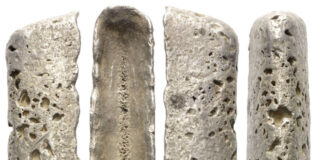Polish Rarities at Solidus
In the current auction 113 Solidus presents 444 attractive lots, including a number of Polish coins with many rarities. Some very rare Russian coinage is also on offer. The auction contains numerous gold coins from all periods, especially from the Byzantine period. At the end of the auction, interesting coin groups with very moderate estimated prices and a selection of numismatic literature will be offered.
The auction will be held as a live auction on the auction platform AUEX on Tuesday, 17th January 2023 from 16:00. Pre-bids can already be submitted.
Customers with a Sixbid account can also participate in the auction live via Sixbid.
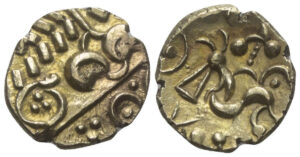
The auction begins with Celtic coins, first six gold staters and quarter staters of Britannic tribes, then coinages of East Celtic tribes and imitations of ancient coins by cultures at the periphery of the classical world. This is followed by a selection of Greek coins, from Magna Graecia to the Greek motherland and further to the Greek colonies in the Black Sea area and in Asia Minor as well as from the Hellenistic kingdoms. Particularly beautiful silver coins are tetradrachms of the Thracian king Lysimachus (lot 1036), of Eumenes I from Pergamon (lot 1070) and from Smyrna (lot 1085). The offer is rounded off by coins of the Arsacids, from Bactria and various North Indian dynasties.
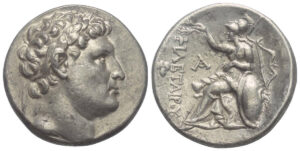
There follow provincial Roman coins, including a rare drachma of Caligula from Caesarea in Cappadocia (lot 1136), denarii of the Roman Republic and coinage of the Roman imperial period. Among the latter a rare consecration coinage for Hadrian from the time of Trajanus Decius (lot 1200), furthermore several late Roman solidi. The Byzantine period is mainly represented by gold coins (lots 1263 – 1269). Three coins of the Ostrogoths and Visigoths conclude the antiquity, including a tremissis of Sisebut (lot 1272).
From the Middle Ages, besides two gold coins from France and Italy, there are rare denarii from Poland (lots 1275 – 1279) as well as pretty denarii from the Crusader Principality of Achaia.
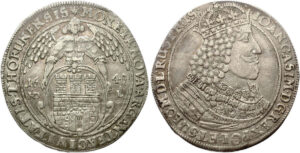
Among the world coins, apart from some gold coins, a series of Polish coins, mostly of silver, are particularly worth mentioning, among them many rarities, e.g. very rare Dreigröschers of Stephan Bathory from Ilkenau (lot 1296) and of Sigismund III. Wasa from Marienburg (lot 1297), the duke of Kurland Wilhelm Kettler from Mitau (lot 1316), furthermore an Ort of August II from Elbing (lot 1323) and a thaler of Johann Kasimir from Thorn (lot 1324). Two copper coins of the Kingdom of Poland (“Congress Poland” in personal union with Russia) in fine condition also deserve attention (lots 1311 and 1312).
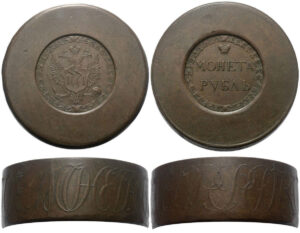
Some rare Russian coins follow. Among others, the impressive novodel of a Sestroretsk copper ruble weighing over one kilo, the heaviest copper coins ever minted in Russia (lot 1325), a gold 3 rouble piece of Alexander II from the rare year 1879 (lot 1326) or a one-sided trial strike in copper of the 25 rouble piece of Nicholas II from 1917 (lot 1328).
The single coins are rounded off by a fine, freshly stamped example of a quarter dollar of the USA from 1864. The last section of the auction is made up of interesting coin groups with very moderate estimated prices and a selection of numismatic literature.
You can access the auction via the AUEX platform.
Visit the website of Solidus Numismatik.




